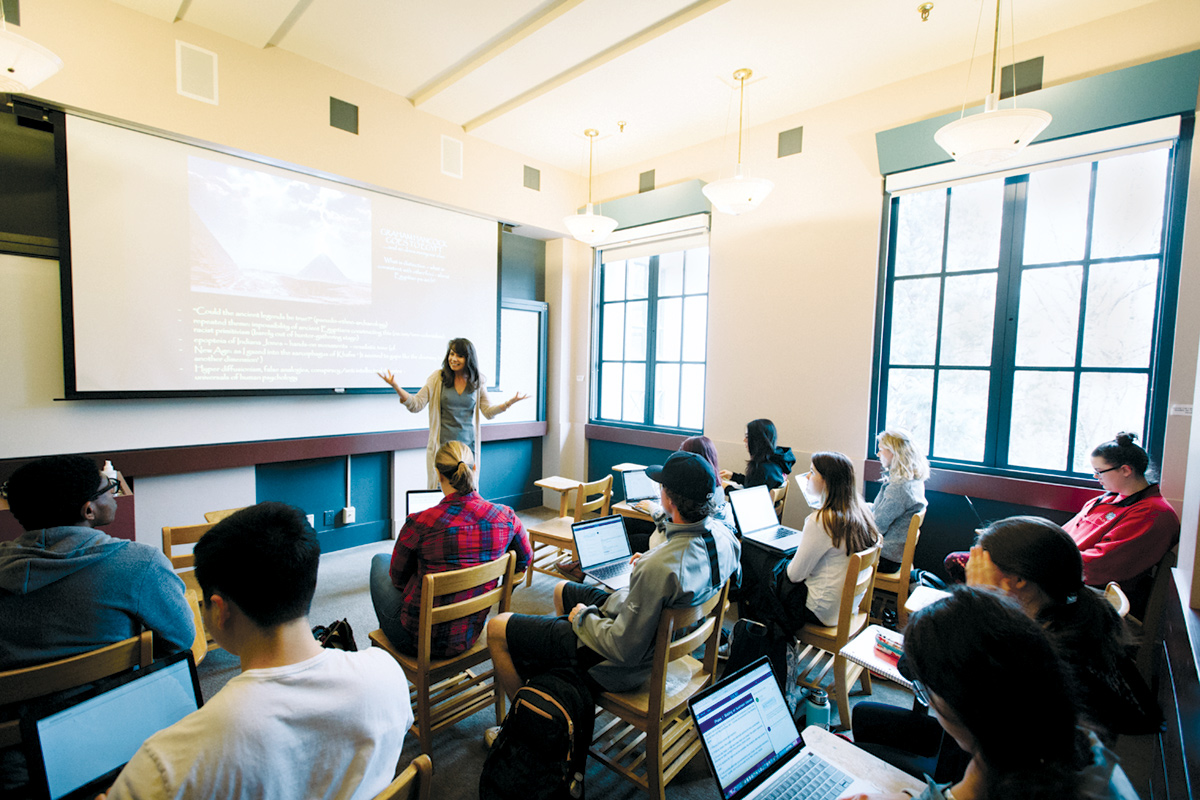Science, Story, or Fake News?
Course Title: Classics 103, Archaeology: Myth, Pseudo-Science, and the Study of the Past

Stephen Nowland
Course Title
Classics 103, Archaeology: Modern Myths, Pseudo-Science, and the Study of the Past
Course Description
Why does archaeology inspire endless theories about aliens, lost civilizations, apocalyptic predictions, and mysterious technologies? While archaeological investigation is in many ways about solving ancient mysteries, archaeology is grounded in rigorous methodologies, careful accumulation and analysis of data, and scientific method. This course explores where pseudoarchaeology comes from and the cultural work it does, and it introduces the foundations of archaeological methods and scientific inquiry. Students develop critical thinking skills and analytical tools to evaluate evidence, and they engage with larger questions about uses of history and the evolution of political and religious ideologies that are built on historical and archaeological ideas. Along the way, they learn about who really did build the pyramids, what happened to Atlantis, and what the Fascists found in the Roman forum.
Faculty CV
Sandra Blakely, an associate professor of classics at Emory College, has written four books, is completing a fifth, and has worked extensively on the most fragmentary sources from ancient Greek and Roman historians. Anthropology, history, and digital approaches to the ancient world are central to her work, as are the analytical tools needed to tell the stories of artifacts—and also make sense of pseudoarcheology and present-day “fake news” narratives alike.
Today's Lecture
A lively discussion breaks out over the day’s reading. The issue at hand—the repeatedly debunked, yet oddly enduring, idea that Vikings paddled their way inland to settle in Minnesota centuries before Columbus set sail from Spain— seems ridiculous at first. Historical context, such as the contempt that greeted nineteenth-century Scandinavian immigrants, helps explain why such a hero narrative took hold. The big reveal is how that story became the rallying point for a particularly violent strain of white nationalism active today.
Quotes to Note
“Science reveals stories that are invisible to the naked eye . . . but does not exhaust the appetite for wonder and the mythopoeic impulse. The history of archaeological investigation confirms that the rational and the irrational go into the field together, both physically and metaphorically. The stories that emerge, informed by the preoccupations of their time, have enormously long life. We are often addressing pseudoarchaeologies that have nineteenth-century roots, but which respond to contemporary currents of racism, nationalism, hostility to academic specialists, and even a profit motive. These stories have an enormous impact on who owns the past—and hold particular significance to us today, as a nation of ideas.” —Sandra Blakely
Students Say
“As a chemistry major with a Mediterranean archaeology minor, this class drives me absolutely bonkers. I’m reading about people who see ventilation shafts in the Great Pyramid and decide that makes them giant microwaves, built by some advanced race. That’s not how science works. That’s storytelling.” —Max Faass 19C



